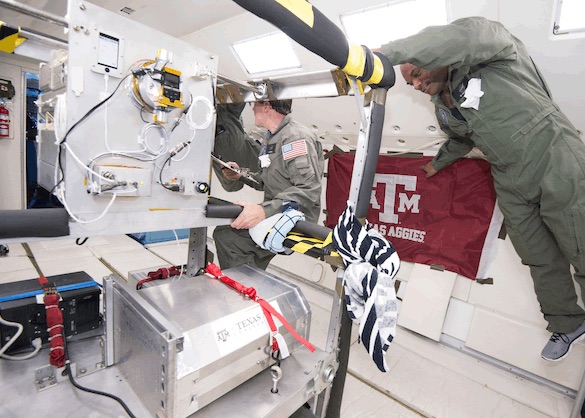Demonstration of Variable Radiator (DoVR)
PI: Richard "Cable" Kurwitz, Texas A&M Engineering Experiment Station
PI: Richard "Cable" Kurwitz, Texas A&M Engineering Experiment Station

- TA14 Thermal Management Systems
NASA and others have supported several programs to develop and evaluate technologies to provide variable heat rejection. The proposal team plans to utilize a vortex phase separator developed at Texas A&M University and licensed to Advanced Cooling Technologies. This device has undergone extensive reduced gravity aircraft testing and has been part of two space flight experiments that have yet to fly. The device has a number of attractive features such as 1) it has no moving parts and 2) relies only on the injected fluid momentum to provide complete separation. This device has been shown to operate from all liquid to all gas inlet flow as well as being able to serve as an accumulator and heat exchanger. The accumulation function is instrumental in our approach in that we plan to exchange gas in the separator with liquid in the radiator to affect the heat rejection variability.
The main goals are:
1) Demonstrate a ‘digital’ radiator concept that modulates the active heat rejection region of the radiator by draining working fluid from sections of the radiator. Our approach is to utilize a vortex separator developed at Texas A&M University incorporated into a single phase loop common to many thermal management systems.
2) Demonstrate long term heat transfer performance of the system through ground testing.
3) Demonstrate system performance in reduced gravity.
Many spaceflight missions will benefit from variable heat rejection systems specifically missions outside LEO and systems with challenging duty cycles. The ability to change the heat rejection capability for the radiator provides mission flexibility important for operationally responsive space (Air Force) and enhances interplanetary or near-earth object missions (NASA).
Technology Details
-
Selection DateNRA-1-APP-A (Jul 2012)
-
Program StatusCompleted
- 2 Parabolic
- 0 sRLV
Development Team
-
PIRichard "Cable" Kurwitz
-
Organization
-
SponsorTexas A&M University
-
More Information

